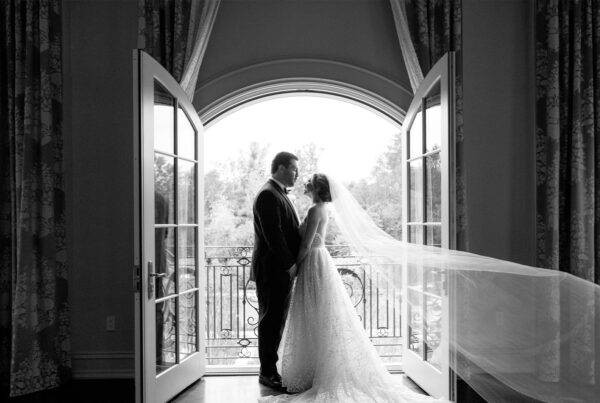Photography is a powerful medium for storytelling. It captures moments, emotions, and experiences that transcends language and cultural barriers. Through our work, we have the wonderful opportunity to tell stories through our images, but it takes more than technical skills to tell compelling stories. Let’s explore some practical tips to enhance your Storytelling Through Photography.
Observe and Anticipate
One of the most important skills for a storytelling photographer is the ability to sit down and watch. Watch for those small moments that others might miss. A child’s laughter, a couple’s embrace, or a beautiful landscape at sunset. Moments other people may take for granted tell valuable stories.Watch the world with a storyteller’s eye, always looking for opportunities to capture meaningful moments.
When you’re out shooting, try to anticipate actions and emotions before they happen. This requires patience and practice, but it’s a skill that can be developed over time. For example, if you’re photographing a wedding, pay attention to the interactions between the bride and groom, and be ready to capture the moment when they exchange a loving glance or a heartfelt hug.
Compose with Purpose
Composition is a crucial element of storytelling through photography. The way you frame your subject, the perspective you choose, and the elements you include or exclude from the frame all contribute to the narrative you’re trying to convey. Understanding the basics means you know how to use them, and when to break the rules a little bit:
- Rule of Thirds: Imagine your frame divided into a 3×3 grid, and place your subject along the lines or at the intersections. This creates a balanced and visually appealing composition that draws the viewer’s eye to the most important parts of the image.
- Leading Lines: Use natural lines within the scene, such as roads, fences, or rivers, to guide the viewer’s eye towards the main subject. This creates a sense of depth and movement in the image, leading the viewer through the story.
- Framing: Use elements within the scene, such as doorways, windows, or branches, to create a natural frame around your subject. This helps to focus the viewer’s attention and add context to the story.
- Simplicity: Sometimes, less is more. Simplify your compositions by eliminating distractions and focusing on the essential elements of the story. A cluttered or busy background can take away from the impact of your subject, so be intentional about what you include in the frame.
Embrace Natural Light
Lighting can be an extremely poignant story-telling tool in photography, as the quality, direction and color of light can deeply set the mood and tone of your particular image. Whenever possible, use natural light to your advantage, especially during golden hour – the light rare is soft, warm and directional, creating flares and glow that can add a touch of magic to your images.
Experiment with different lighting techniques to create interest, depth and dimension in your photographs. Backlighting causes a rim of light to illuminate the contours of the subject, separating it visually from the background. It can evoke powerful feelings and draw attention to the emotional center of your photograph.
A lack of light can also be very compelling. Using darkness to shroud part of your subject. It creates an aura of mystery and gives you an avenue to expand on in later photographs, or simply leave a mystery.
Connect with Your Subjects
When photographing people, it’s important to build a rapport with your subjects to help them feel more comfortable and authentic in front of the camera. Get to know them, make them comfortable. This can be especially important when photographing strangers or people who are not used to being in front of the camera.
Once you’ve established a connection, focus on capturing genuine emotions and expressions. This may require patience and persistence, but the results are worth it. Look for moments of laughter, joy, contemplation, or even sorrow, and be ready to capture them when they happen. Remember, the most powerful stories are those that evoke an emotional response from the viewer.
Look for the Details
In storytelling photography, the details matter. Pay attention to the small things that add context and depth to your story, such as facial expressions, body language, and environmental elements. These details can provide clues about the subject’s personality, emotions, and circumstances, helping the viewer to connect with the story on a deeper level.
Close-up shots highlight these details and create a more intimate connection with the viewer. A tightly framed shot of a person’s hands, for example, can speak volumes about their life and experiences. Unfortunately, close-up shots can also lose necessary details or background pieces that the viewer needs to comprehend the entire story.They really shine in conjunction with other shots or in a sequence.
Create a Narrative
Every story has an arc – a beginning, or introduction, some middle part to develop and provide the viewer with some information, and the ending. First of all, it would be great to provide the viewer with a wide shot to illustrate all the complexity and completeness of the scene. Follow up narrative images that can give wide overviews or broad details. And after that, you may focus on the elements of the story and give the viewers some close-ups.
In other words, each photo is supposed to make a whole and tell its part of the story. Each image in the sequence is supposed to provide the viewer with some new elements to consider and understand the whole meaning of the sequence.
Evoke Emotion
Stories are designed to evoke an emotional response from the view. Be it joy, sadness, empathy, or nostalgia, photographs should build a connection with their audience on a deeper level. Light, color, and composition create mood and atmosphere that drives this connection.
A warm, golden light, for example, can create a sense of happiness and contentment, while a cool, blue tone can evoke feelings of sadness or loneliness. Similarly, a low angle shot can make a subject appear powerful and imposing, while a high angle shot can make them seem small and vulnerable.
Edit with Intention
Post-processing and editing can play a crucial role in the storytelling process in modern digital photography. Nothing can match in-camera work, but there are many ways to modify light, color, and other aspects to enhance the mood or the overall story’s effectiveness. However, many of these modifications should be made carefully and with a purpose, as too many effects can distract the viewer from what the story is about.
Use color grading to create a consistent-looking mood for a sequence of images designed for a single story. Retaining a coherent style can be crucial to your work. Create a sense of consistent story development with selective adjustments to highlight specific details, affecting either overall light or specific bands of frequency. Use cropping and pruning to remove the distracting parts from images so that they only encompass the essential elements.
Share Your Stories
After you’ve taken your photography and gotten everything edited its time to share your photos with the world. You can do this through a variety of mediums, from Instagram and Facebook through to a work website and online portfolios. You may also decide to show your work by hanging your images on the wall or creating photo books to share with friends and family
Engage and listen to feedback from your audience when you share your stories. It improves your work and helps connect with other photographers. The best stories are the ones that speak to people, primarily on a personal level, so never shy away from infusing your photographs with your experiences and interpretations.
Practice, Practice, Practice
Storytelling through photography takes work. The more photos you take, the better you’ll become at capturing meaningful moments and conveying powerful narratives. Make a habit of carrying your camera with you wherever you go, and challenge yourself to find storytelling opportunities in your daily life.
Experiment with different techniques and styles, and don’t be afraid to make mistakes. Some of the best stories come from unexpected moments or happy accidents. The key is to keep practicing and refining your skills, always striving to improve and evolve as a storyteller.
Storytelling through photography is a powerful way to connect with others and share your unique perspective on the world. The most important thing is to stay true to yourself and your vision, and to approach each story with empathy, curiosity, and an open heart. Happy storytelling!









